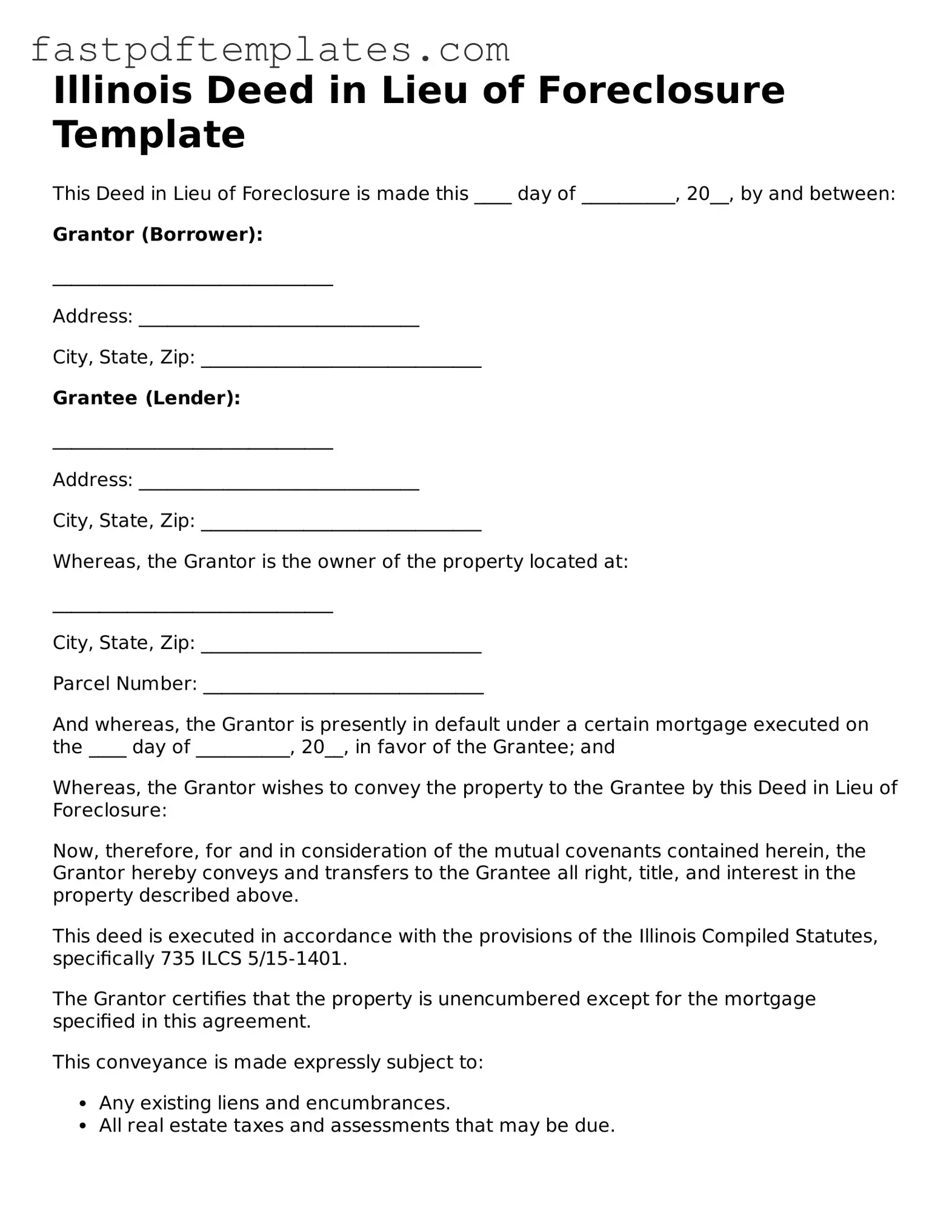Illinois Deed in Lieu of Foreclosure Template
This Deed in Lieu of Foreclosure is made this ____ day of __________, 20__, by and between:
Grantor (Borrower):
______________________________
Address: ______________________________
City, State, Zip: ______________________________
Grantee (Lender):
______________________________
Address: ______________________________
City, State, Zip: ______________________________
Whereas, the Grantor is the owner of the property located at:
______________________________
City, State, Zip: ______________________________
Parcel Number: ______________________________
And whereas, the Grantor is presently in default under a certain mortgage executed on the ____ day of __________, 20__, in favor of the Grantee; and
Whereas, the Grantor wishes to convey the property to the Grantee by this Deed in Lieu of Foreclosure:
Now, therefore, for and in consideration of the mutual covenants contained herein, the Grantor hereby conveys and transfers to the Grantee all right, title, and interest in the property described above.
This deed is executed in accordance with the provisions of the Illinois Compiled Statutes, specifically 735 ILCS 5/15-1401.
The Grantor certifies that the property is unencumbered except for the mortgage specified in this agreement.
This conveyance is made expressly subject to:
- Any existing liens and encumbrances.
- All real estate taxes and assessments that may be due.
In witness whereof, the Grantor has executed this Deed in Lieu of Foreclosure as of the day and year first above written.
Signature of Grantor: ______________________________
Date: ______________________________
______________________________
Signature of Grantee: ______________________________
Date: ______________________________
State of Illinois
County of ____________________
On this ____ day of __________, 20__, before me, a notary public in and for said county, personally appeared ______________________________, known to me to be the person(s) whose name(s) is/are subscribed to the within instrument, and acknowledged that they executed the same.
Given under my hand and seal this ____ day of __________, 20__.
Notary Public: ______________________________
My Commission Expires: ______________________________
